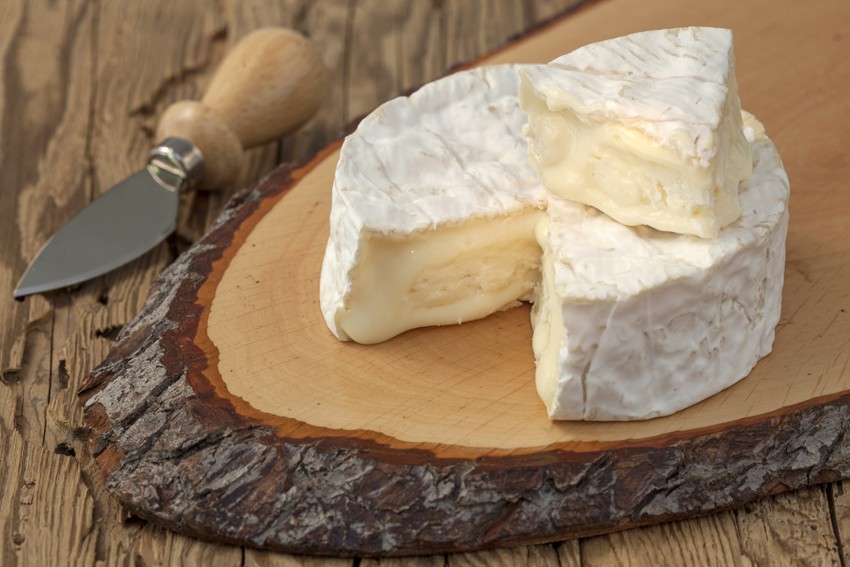Cheese Matters: Cheese Architecture Part 1

Have you ever wondered why cheese comes in all different shapes and sizes?
It is probably mostly taken for granted, but I call it cheese architecture. When I dived head first into cheesemaking some 14 or so years ago, hungry to learn as much as I could as quickly as I could, I headed to Europe. At an early morning visit to the Rungis markets in Paris, I believe I experienced cheese architecture at its best. There were hundreds of cheeses and I discovered that I had no idea that the world of cheese was so diverse. Immense wheels of Emmentaler, squat barrels of cloth bound cheddar, delicate goat milk cheeses the size of large buttons, cylinders of Stilton and bulging barrels of Parmigiano Reggiano just to name a few.
An arrangement of cheeses in all manner of different sizes, shapes and colours is not unlike a haphazard cityscape. This rather artistic element of cheese fascinates me. The imposing wheels of Emmentaler, which originated in the Emme Valley in Switzerland, are said to date back to 1292. Weighing in at around 80 to 100 kilograms. Some 265 gallons of milk are required to produce one cheese which is 45 inches in diameter – now that’s some cheese party!
The size of the cheese is said to be largely due to the extreme flush of seasonal milk produced in the region. In order to use the volume of milk quickly the large cheeses were believed to be the solution, preserving the milk for use at a later time. Making several immense wheels of cheese was far easier thanhandling hundreds of smaller wheels that need individual turning, washing and wrapping.
Traditional Cheddar made in 25kg wheels that are squat and rotund are said to be made to that size due to the length of time the cheese needs to mature. Aged cheddar is best after 18 months; it is at this stage that the cheese develops all those lovely characters we look for; crumbly, tasty and above all bitey! If the cheese is made in a smaller format, as are some Cheddars known as Truckles, they do not stand up to the lengthy maturation period – losing too much moisture and consequently drying out and ultimately cracking at the rind. A tell tale sign that things have not gone according to plan. The bulky 25kg version has enough available moisture and density to withstand the maturation period perfectly.
The Valencay ashed goat cheese originates in Brenne valley in Berry, France. This pyramid shaped cheese with its top chopped off is said be the result of Napoleon’s rage. After returning from disastrous encounters in Egypt he stopped at the castle of Valencay. Their local pyramidal goat cheese apparently sparked unpleasant memories prompting him to cut the top off in fury with his sword leaving the shape that survives to the present. I love this story, but here’s my cheesemaker’s version. Soft lactic goat cheeses are fragile, and I suspect it is impossible to have a sharp point going against gravity once the cheese hoop is removed.
Watching the point of the pyramid slowly flatten would be nowhere nearly as exciting!
Brie de Meaux is made in large flat wheels around 35cm diameter and weighing around 3kg. This shape offers substantial surface area for the rind to develop and penetrate the cheese. The entire cheese is ripened evenly and efficiently.
There are many stories about Camembert, some say it is the poor cousin to slim and elegant Brie – I will let you be the judge that.
The shape of Camembert, being stocky and squat, is uniquely different. The cheese not surprisingly behaves very differently. Ripening far slower, as the thick stocky 11cm diameter wheels tend to hold a chalky centre for a good length of time. The shape and size offers far less surface area to the Brie.
In 1880 Eugène Ridel a French engineer invented small round boxes made of poplar wood to suit the architecture of Camembert. The cheese fitted snugly within and conquered the cheese world with immediate success. Camembert could travel without damage, ripening slowly, and its affordable size meant that consumers could buy the whole cheese and mature it at home until perfectly ripe.
I hope that next time you visit a cheese counter some of these stories spark a thought in your mind. Clearly the shape and sizes of some of the world’s most famous cheese had sound reasoning and colourful stories behind them.